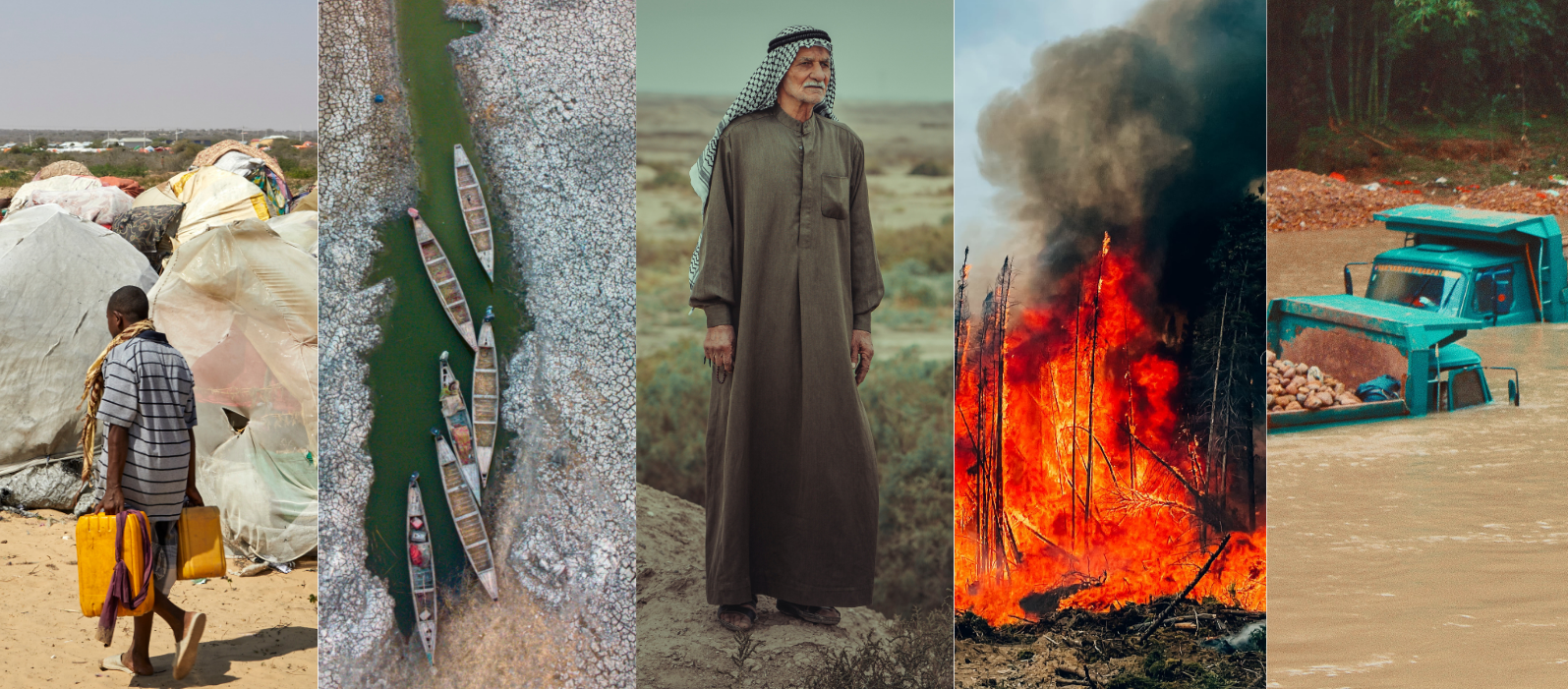After six consecutive months of record-breaking heat, 2023 is poised to become the hottest year on record. Fuelled by the heat, this year has seen unprecedented extreme weather events hitting every part of the world.
In the Horn of Africa, a three-year drought that caused food insecurity for millions was followed by massive floods that have killed more than 300 people. Both events show clear climate change fingerprints.
In July, deadly heatwaves brought extreme temperatures to large regions of Europe, North America and China for weeks on end – an event that would have been extremely rare or even impossible without human-caused warming.
Months later, more than 3,400 people lost their lives in Libya when three dams collapsed after prodigious downpours in September. While conflict-related insecurity and poor dam maintenance created the conditions for the disaster to occur, we found that climate change increased the intensity of the heavy rainfall by up to 50%.
This year’s wildfire season in Canada has been the most extreme ever recorded. The fires have burnt more than 18 million hectares, shattering the previous record by more than 10 million hectares. Our study found that climate change made the hot, dry and windy conditions that drove the wildfires in Québec at least two times more likely.
These are just a few examples of the devastating events we have witnessed this year. There were many more. In 2023, World Weather Attribution reviewed more than 120 weather events with human impacts severe enough to warrant an attribution study.
We studied 14 of these events in detail: five heatwaves, five heavy rainfall events, three droughts and one wildfire. Of these, six were in Africa, four were in Europe, two were in North America, two were in South America, three were in Asia and one was in Australasia (some events covered more than one region).
To advance global understanding of changing weather extremes, we aim to achieve a balance of countries and continents studied. But we often face challenges. In June, when we investigated the heavy rainfall that led to devastating flooding and the deaths of nearly 600 people in Rwanda and the Democratic Republic of Congo the result was ‘inconclusive.’
A lack of real-world weather data and the inability of climate models to accurately simulate the event meant we couldn’t quantify the influence of climate change on the rainfall. Our study highlighted the need for significant investment in weather monitoring stations and climate science to understand changing weather extremes in central Africa.
Extreme heat is set to continue in 2024. The combination of human-caused climate change and El Niño, a naturally occurring climate phenomenon, could see 2024 break this year’s record and go on to become the hottest year on record.
At just 1.2°C of warming, millions of vulnerable people have experienced devastating extreme weather. With every fraction of a degree of warming from the burning of fossil fuels, heatwaves, fires, heavy rainfall and drought will become more intense and more likely.
To minimise loss and damage, the world needs to be better prepared. Existing human vulnerabilities are what turns extreme weather events into humanitarian disasters.
Whether it is insufficient early warning before heavy rainfall, a lack of cooling green spaces in a city during a heatwave, or settlements built in flood-prone areas, in 2023, our analyses highlighted again and again that many impacts could have been prevented or minimised with better planning and more funding. This finding underscores the urgency of accelerating both adaptation and emissions reduction.
Our vulnerability and exposure analyses also identify the people who are least able to protect themselves from the impacts of extreme weather. Overwhelmingly, these people are the poorest and most marginalised in societies – people experiencing homelessness or living in informal housing, people with disabilities or underlying health conditions, and outdoor workers. It is clear climate change is increasing inequality.
Alongside moving away from fossil fuels and reducing emissions to net zero, reducing the vulnerability and exposure of these populations is critical to make our world a safer place.





